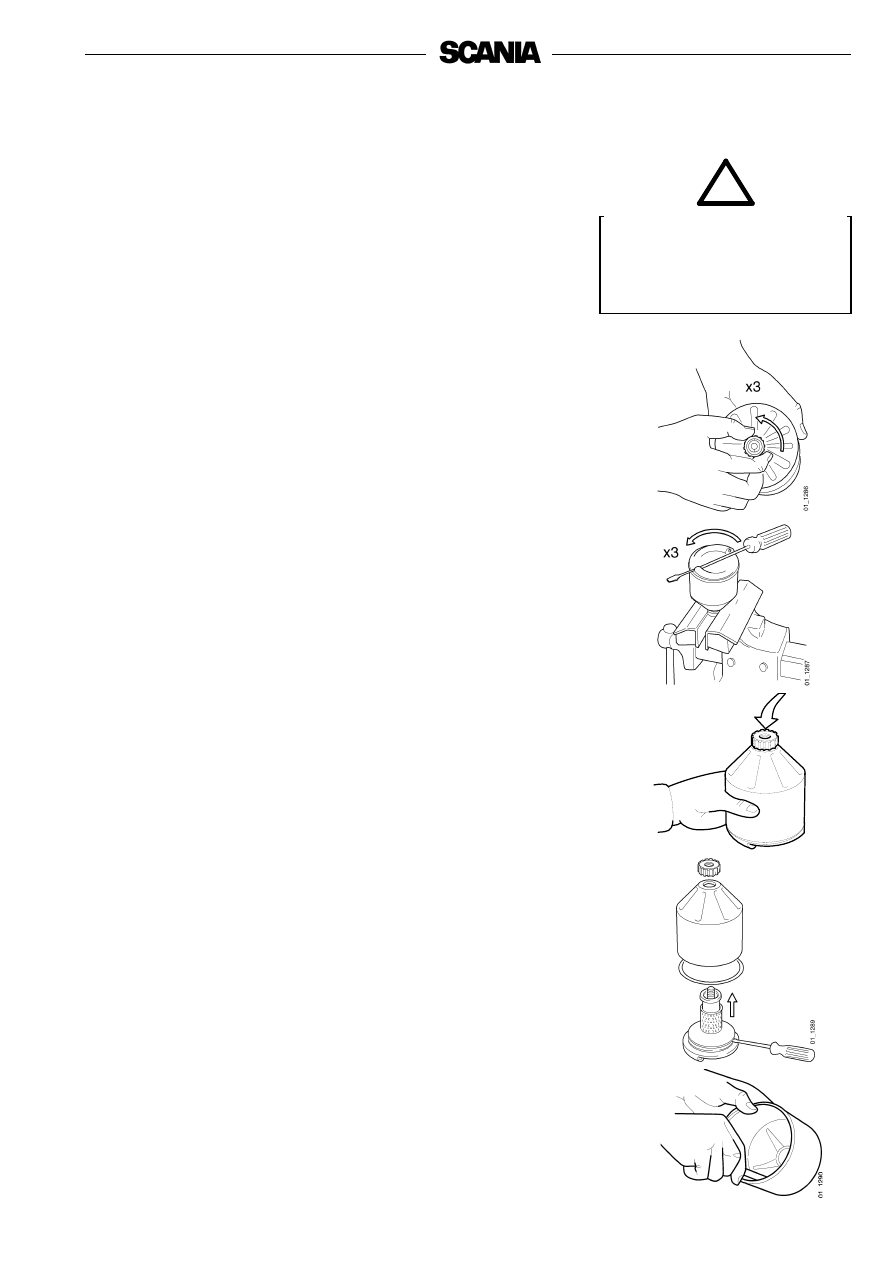Scania DC16 EMS with S6/PDE. Industrial engine. Operator’s manual - part 3

3. Every 400 hours:
Cleaning the oil filter unit
(in connection with oil change)
01
12
88
Open the cover carefully. The
oil may be hot.
WARNING
!
- Clean the cover. Unscrew the nut and remove the cover.
- Lift out the rotor and loosen the nut on the rotor cover three turns.
- If the nut is jammed:
Clamp the nut, but never the rotor, in a vice and turn the rotor three
turns by hand or with a screwdriver.
- Tap the nut lightly with your hand or a plastic hammer, to detach the
rotor cover from the bottom plate.
- Unscrew the nut and remove the rotor cover.
- Remove the strainer located on the rotor. If the strainer is stuck, you can
prise its bottom edge carefully until it comes loose from the bottom
plate.
- Scrape off the deposits from the inside of the rotor cover. If there are no
deposits, this indicates that the cleaner is not working properly.
- If the deposits are thicker than 20 mm: clean more often.